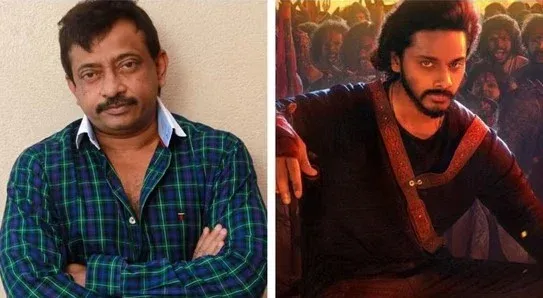
Ram Gopal Varma takes a dig at VFX of ₹400 crore budget films, says Mirai is a big film that didn’t ‘boast about itself’
Ram Gopal Varma, known for his outspoken views on the film industry, has recently shared his thoughts on the use of Visual Effects (VFX) in Indian cinema. In a series of tweets and interviews, Varma has taken a veiled dig at the excessive reliance on VFX in films boasting massive budgets, contrasting them with the more subtle and effective approach he believes was taken in the film Mirai.
Varma’s comments come at a time when Indian cinema is increasingly focusing on big-budget productions with elaborate special effects. While acknowledging the technical advancements, he suggests that some filmmakers are using VFX as a crutch, prioritizing spectacle over substance.
“I saw some Telugu film called Mirai. I didn’t even know it existed. I suddenly saw the trailer. I am not comparing the story or anything, but the VFX quality in that is far, far better than what I have seen in ₹400 crore films. They were trying to boast and all, and the VFX was not even working,” Varma stated in an interview. He added, “Mirai is a big film but it didn’t boast about itself.”
The director’s remarks sparked considerable debate among film enthusiasts and industry insiders. Some agree with Varma’s assessment, arguing that many high-budget films prioritize visual grandeur at the expense of compelling storytelling and realistic VFX. Others contend that big-budget films often require extensive VFX to realize ambitious creative visions, and that comparisons to smaller projects may not be entirely fair.
Mirai, though perhaps lesser-known compared to the tentpole releases Varma seems to be referencing, has been praised for its innovative use of technology to enhance the narrative. Varma’s praise highlights a growing sentiment that effective VFX should serve the story, rather than overshadow it.
This isn’t the first time Ram Gopal Varma has voiced his opinions on the state of Indian cinema. He has consistently challenged conventional filmmaking practices and advocated for a more experimental and content-driven approach. His latest comments on VFX are likely to fuel further discussions about the role of technology in filmmaking and the importance of striking a balance between visual spectacle and narrative depth.
The debate also touches on the broader issue of budget allocation in film production. While big-budget films often allocate a significant portion of their resources to VFX, smaller projects may need to be more resourceful and innovative to achieve similar results. This can sometimes lead to more creative and effective solutions, as suggested by Varma’s comments on Mirai.
Ultimately, Varma’s comments serve as a reminder that visual effects are just one tool in a filmmaker’s arsenal. The true measure of a film’s success lies in its ability to engage audiences emotionally and intellectually, regardless of the scale of its special effects.
Whether one agrees with RGV’s assessment or not, it’s clear that his perspective offers a valuable counterpoint to the prevailing trends in Indian cinema, encouraging filmmakers to consider the impact of VFX on their storytelling choices.
Mirai’s success may be attributed to a dedicated team. It has a runtime of 1 hour and 42 minutes, and is directed by Karthik Katham, who also wrote the story.
- Mirai has a fresh rating of 82% on Rotten Tomatoes.
- The film features a combination of live-action and animated elements.
Disclaimer: Film budgets mentioned in this article are approximate values based on publicly reported information. The views expressed by Ram Gopal Varma are his own and do not necessarily reflect the views of this publication.
Disclaimer: This news article is based on publicly available information and may be subject to updates.




